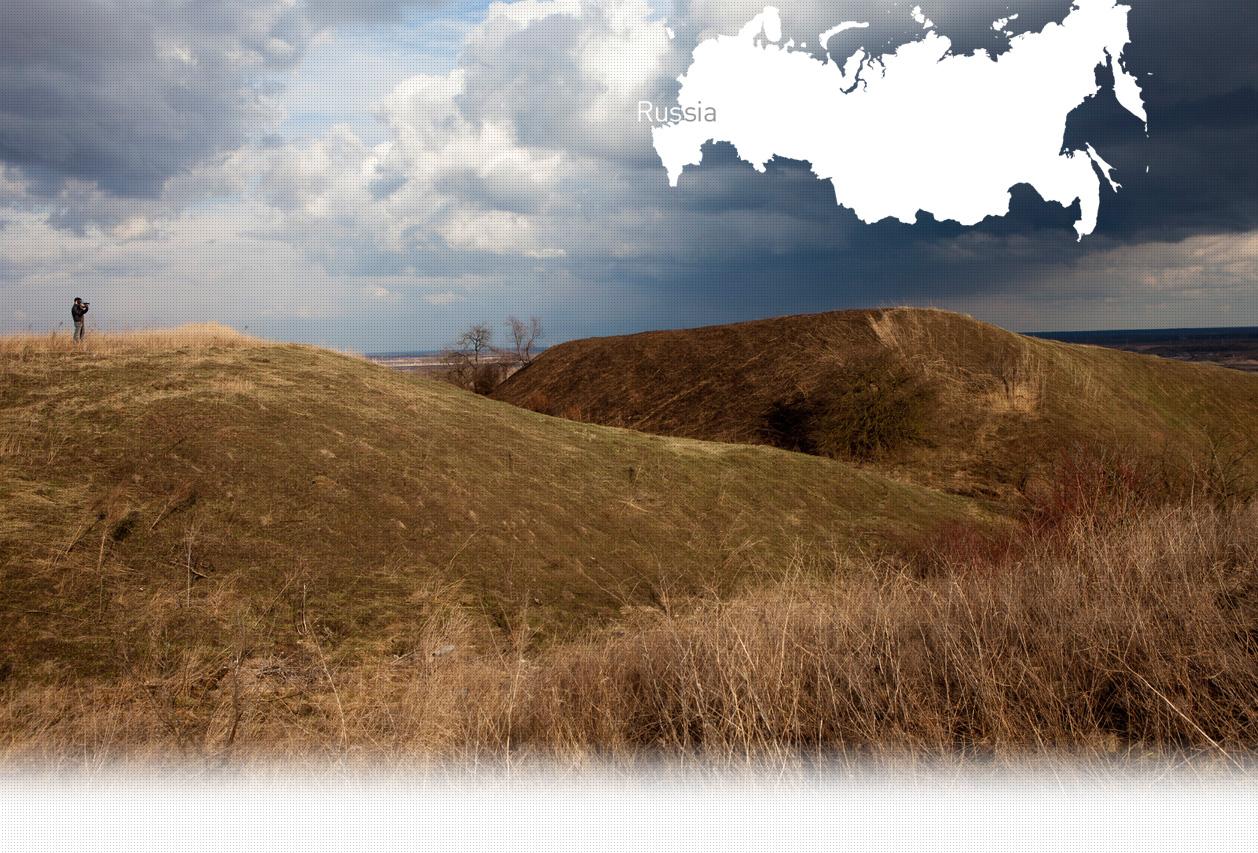

1 Killing site(s)
Nikolay K., born in 1927: “The Germans started persecuting the Jews almost immediately. They gathered them in a building, but I don’t know where exactly. Sometime later, they shot them in the military Garden. One day, I was fishing with my friends and saw a black truck called “Black Raven” coming towards the garden. It was followed by a cart with four men in civilian clothes; perhaps they were people from the administration. Then the truck left and came back again. I had never seen it in the village before. Then I heard a series of shots, but I didn’t hear the cries, although we were at a distance of about 150 meters, on the other side of the river. When we saw that bullets go through the bulrushes, we ran away.” (Witness n°747, interviewed in Kalnibolotskaya on September 17, 2017)
“In September 1942, the Germans began to gather all the Jewish refugees evacuated to the district, under the pretext of sending them to agricultural work. [...] When all Jews were rounded up in the Ternovka School n° 5, a big covered truck, painted in black, arrived from the Tikhoretsk gestapo. The Jews were taken there and transported to communal garden located on the south-eastern outskirts of Kalnibolotskaya. In the north-east part of this garden, a pit had been dug. [...] This truck made two trips.
The inhabitants of Kalnibolotskaya, Anna S., and Yefrosinia M., who witnessed the terrible execution of citizens of Jewish nationality, say: “We were working in the vegetable garden garden [...], when suddenly we heard a truck noise. We looked in the direction of the pit that had been dug in front of our eyes the day before, and we saw a large covered truck painted in black. We were 300-400m away. When the truck door was opened, we heard women and children’s screams, followed by isolated gunshots. Obviously, the fascist executioners had to finish off their victims in the pit. The same thing happened again during the truck’s second trip.
On September 16, 1943, the special commission [...] proceeded to open the mass grave in the communal garden. It discovered 48 bodies including 12 men over the age of 50, 24 women of the same age, 12 children aged between one and thirteen years. All were of Jewish nationality. [...] The other Jews were transported by truck to the Tikhoretsk Gestapo” [Act of the State extraordinary commission (ChGK), drawn up on November 30, 1943; RG 22.002M. 7021-16-435]
Kalnibolotskaya stanitsa is located on the banks of the Yeya river in the Novopokrovsky district, 180 km north-east of Krasnodar. The settlement was founded in 1794 by the Cossacks by the Black Sea. At the beginning of 20th century there were two brick and four oil mills, 12 smiths, three cooperies, one wheel and 4 carpenter’s shops, six schools in the village. According to the census in 1939 only 4 Jews lived in the stanitsa. Kalnibolotskaya was occupied by the German troops on August 1, 1942. Dozens Jewish refugees arrived to the satinitsa at the outbreak of the war.
According to the historical resources all the Jewish refugees of the district were assembled in a school building in September 1942. Then a black covered truck brought the victims in two groups to the pit that had been dug in advance. The execution was conducted by Einzatzgruppe C.The witnesses, interviewed by Yahad’s team, confirmed the archival information about the mass shooting of 48 Jews in the public garden on the village outskirts. Having said this, one of the witnesses stated that Communists were also shot at the same place, although there is no such information in the archives.
Do you have additional information regarding a village that you would like to share with Yahad ?
Please contact us at contact@yahadinunum.org
or by calling Yahad – In Unum at +33 (0) 1 53 20 13 17